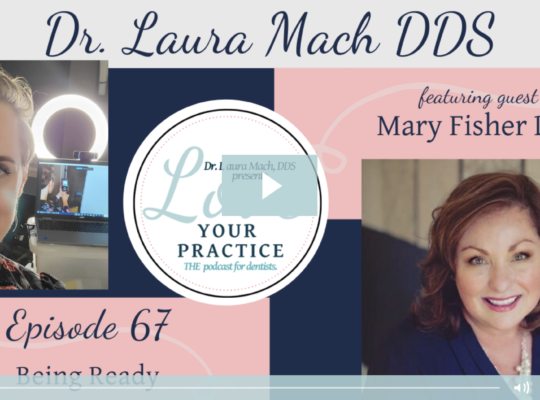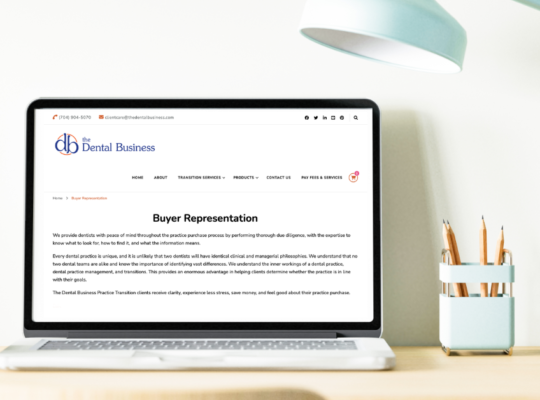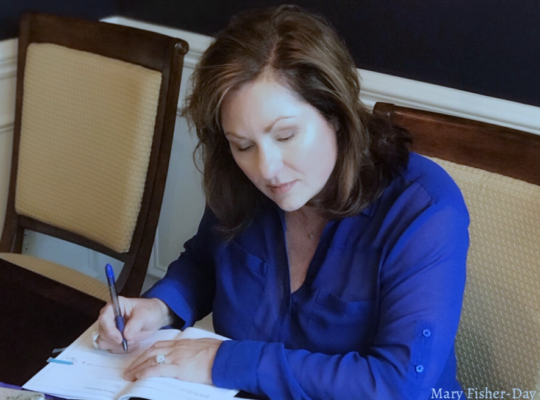Conducted by Livvie Matthews, Simple Social Media TV
Part Two
Livvie Matthews: Mary, what about Compliance and Documentation? Do you feel there are particular areas that practices should pay attention to when it comes to Compliance and Documentation?
Mary Fisher-Day: Yes, I do. These are the areas dentists rarely think about. Yet, these are areas that can cost a practice hundreds of thousands of dollars.
First, you must know HIPAA laws. You cannot just assume that your team knows and abides by them. You will need to make sure that they are following your office protocol and that manuals are signed as required by law. I can’t emphasize this enough; make sure that patients sign your HIPAA acknowledgement forms; make sure your staff knows the law. Discuss it and document the discussions in your team meetings!
Many offices completely overlook OSHA. They forget to update infection control manuals, MSDS sheets, training and signatures yearly. The Radiation Policy Manual is often overlooked as well. I recommend that practices have a Compliance Officer. Some offices assign this responsibility to the office manager. My recommendation is that you assign the responsibility to a loyal, long-term employee. It’s helpful to hold compliance training at the same time each year. Having someone assigned this duty and accountable for making certain that all the i’s are dotted and the t’s are crossed and that training is completed and documented on a yearly basis is the only way to make sure it’s taken care of.
New employees: This is another area that is easily overlooked. When you bring on a new employee, they need to read and sign your Personnel Policy and Procedures Manual, read your HIPAA protocol and sign your manual. New employees who will be taking radiographs must read your radiation policy manual and sign it. All new employees should read and sign your OSHA Compliance Manual and go through your training program. Document all training. Where documentation is concerned, you will never have too much, but you can have too little. I can’t emphasize enough the importance of thorough documentation. I say this to clients all the time, “document, document, document.” I recommend that conversations between the doctor and the patient where it relates to the patient’s dental care be documented. Obviously you can’t write everything down, but write down any treatment recommended and the patient’s response to the recommendation.
Livvie: What about an Emergency Exit Strategy? Can you tell us how important it is and what does it entail exactly?
Mary: Yes, I feel so strongly about this. As I’ve witnessed countless families deal with the tragedy of losing their loved one and seen it compounded when they’re faced with the disposition of a dental practice. They don’t know what to do, who to turn to or where the documents needed to sell the practice are located. I know how important it is for a dental practice owner to have an Emergency Exit Strategy. It is the only way to protect your family, your patients and your team should you become disabled or worse.
Did you know that when a doctor dies the value of the practice drops 5% per week? An emergency exit strategy can be as simple as having a current practice valuation and letter of instruction stating what to do and who to call to handle practice matters if you become incapacitated or die. Unfortunately, a windshield appraisal will not protect you. A bank or a buyer will not accept it. They want a comprehensive valuation done by an experienced and reputable dental practice transition company.
Livvie: I have never thought about things like that. And you said the value of the practice goes down 5% per week?
Mary: Yes, per week!
When I speak of this to clients I receive interesting reactions. Most have no plan to deal with this issue until they are ready to retire. The problem is, you don’t plan a car accident or a heart attack. For example a 35-year old dentist died of a stroke. She left behind a husband and two small children. There was no letter of instruction. The family had no idea where to turn or what to do. They were devastated and grieving. In the long run, everything she worked for was gone. Her family was left unprotected and her team was left jobless.
This doesn’t have to happen. A letter of instruction should be left with trusted business family member or business associate. It should be someone who knows the dental industry and can quickly assist with handling the disposition of your practice. Finally, it is very important that your spouse or closest family members know where your Letter of Instruction and the Practice Valuation are kept.
Livvie: That is excellent information, Mary! Can you tell us about some of the resources or services you offer?
Mary: We have a lot of resources to assist dentists with the daily running of a dental practice. One resource I’m very happy to say we now offer is a customized Personnel Policy and Procedures Manual. This is another area that slips the minds of dentists until they need one.
Another great resource we offer are downloadable forms including our new patient letter, previously mentioned You can download it once and use it forever. We have other downloadable forms, including a Practice Potential Analysis (discover the potential of your practice based on your practice numbers), Hygiene Daily, Weekly and Monthly Monitors, an Employee Compensation Statement, Non-Solicitation Agreement and Preventive Therapy Notification. We have several other useful forms, as well.
We also offer assistance with a thorough Practice Valuation and Letter of Instruction.
Livvie: Mary, you mentioned a couple of areas to include in a personnel policy manual. What are some other things that should be addressed?
Mary: You should clearly define your attendance, personal conduct, computer and cell phone usage, leave of absence policies; your benefit package and who qualifies, performance evaluations, what they entail and how raises are given. Spell out your policy on firearms, drug and alcohol abuse and solicitation (Avon, Mary Kay, school wrapping paper, etc.).
These are important because if it’s not in writing, it’s as if it was never said. Clarify policies on leave of absence; there are different types (health and mental leave of absence, pregnancy leave of absence and work-related injury leave of absence).
Define the difference in a full-time employee, a part-time employee and a temporary employee. Make sure you have a signature page for employees to sign and date stating that they have read and understand your office policies. Again you want your manual to be customized. If you are called to go before the labor board, you will see that the more specific you are in your policies, the better you will be received.
Livvie: That is great. It looks like you have covered it all. If you only deliver your policies verbally, employees may or may not hear it. And if they did hear it, what did they hear? Did they hear it as you intended? They should definitely have their Personnel Policy Manual in writing, like you said and have them sign off on it.
Mary: In addition, make sure you spell out what your office hours are and that they may be subject to change. Be very clear about what time employees are expected to report to work and any policy you have about “riding the clock.” I also recommend that a statement is made to the effect of “due to the nature of dentistry, procedures may run longer than anticipated. If this occurs, employees will be expected to stay until treatment is complete.”
There are so many other things to cover in a Personnel Policy and Procedures manual. Ours is approximately 25 pages, and very comprehensive. Thanks for allowing me to share my thoughts with you.
Dentists with questions can contact me directly at
Watch for Part Three of this in-depth interview in an upcoming newsletter!
Livvie Matthews, a 30+ year Dental Business Office Professional, is a Client Attraction Coach and Consultant. She provides solutions for self-employed service professionals and small business owners, just like you, who struggle with increasing their income, how to market more effectively, and would like to get more clients/patients consistently. Livvie is passionate about helping you learn to draw more clients/patients into your space using the incredible power of Social Media and Online Marketing.






